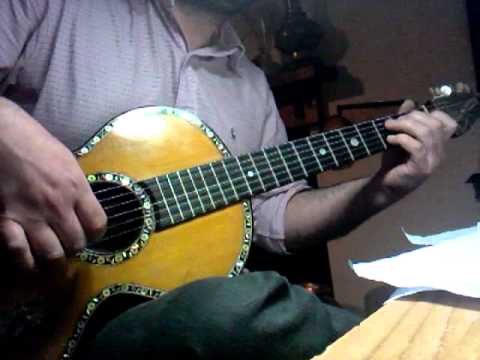Βρηκα αυτο το βιντεο,το παλικαρι παιζει ενα κλασικο κομματακι με μια κιθαρουκλα του μουρτζινου..το βαζω περισσοτερο για να δουμε την κιθαρα..εργο τεχνης!!!
Γιατί αυτός ο τίτλος?? Αν είναι όντως του μούρτζινου, πρόκειται για ντοκουμέντο. Πολύ ωραίο πάντως.
Μακάρι κάθε μέρα να είχα από κανά δυο τέτοιες “άχρηστες πληροφορίες”!
Ωραιώτατη κιθάρα !
Αν ειναι Μούρτζινος, το δηλωνει το κείμενο που συνοδεύει το βιντεο στο ΥΤ
<<The guitar in this video was made by Demetrius Mourtzinos (1857-1931) and dates to circa 1890. Demetrius Mourtzinos is recognized as one of the finest Greek luthiers (guitar makers). He came from Aegina and started originally as a cabinet maker before becoming an artisan instrument maker with a workshop in Athens. He won many awards for his instruments which often featured ornate inlay, and was awarded medals at the International Exhibition in Paris (1889 and 1900), Athens (1903), Ostend (1904) and Liège (1905). Like many parlour guitars of the period, this particular guitar is not very large, and therefore not particularly loud - suited more to baroque music (Bach, Pachelbel, Paganini etc) than the romantic pieces of its era. The back and sides are Brazilian rosewood, the neck is highly figured Walnut with an Ebony fingerboard. The binding on the sides is probably boxwood, and arranged similar to Tunbridge Ware inlay, the Spruce top features profuse mother-of-pearl and abalone inlay with a butterfly motif in abalone and mother-of-pearl between the bridge and soundhole. The scroll headstock is similar to what you might find on an Italian Fabricatore or an Austrian Stauffer with a floral engraved nickel plate covering the tuning gears. Due to the very slim neck (even smaller than a Jackson or Ibanez electric) it’s relatively difficult to play polyphonic music on it with average sized hands (with the strings being so close together). For playing with a pick though, the neck plays very fast and the action is mmmmm perfect. I would suspect that this instrument was built for exhibition, and is probably the finest Greek guitar of the period. The piece I’m playing is ‘Fughetta’ written by Johann Pachelbel (1653–1706), it was originally written for the organ, but translates nicely to the guitar. It’s not particularly technically demanding, but the beat has to be perfect to get it flowing properly, so practice it with a metronome! I’ve rushed it slightly - you’ll find the tab at classtab.org. I’m not much of a performer, and my internet connection is slower than a grannys zimmer-frame, but if anyone’s particulary interested in rare 19th century guitars I might upload videos of some others from my collection.>>
ΥΓ
τετοια “άχρηστα” ας ανεβαινουν πιο πολλά!
και μια φώτο να την έχουμε

και κιθαρα-λυρα Μούρτζινος.
περισσοτερα εδω.
https://greekluthiers.wordpress.com/2020/05/10/ύ-ά-ύ-1857-1931/amp/